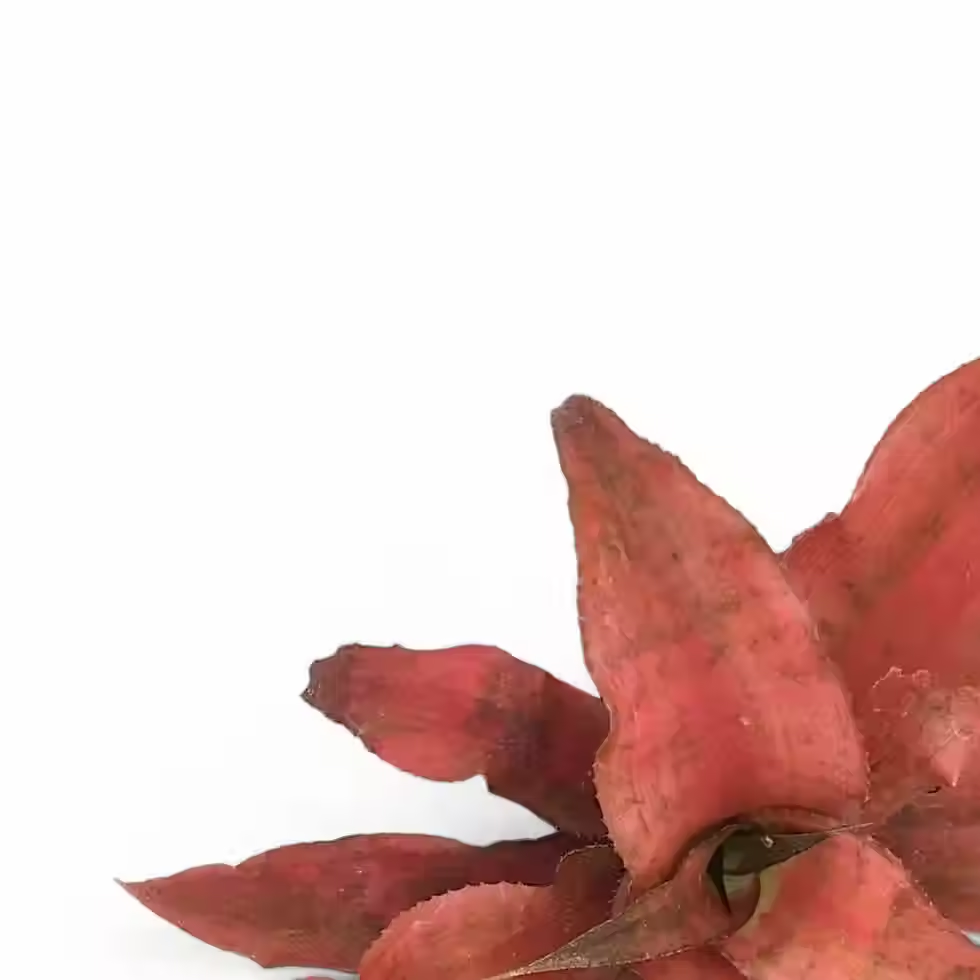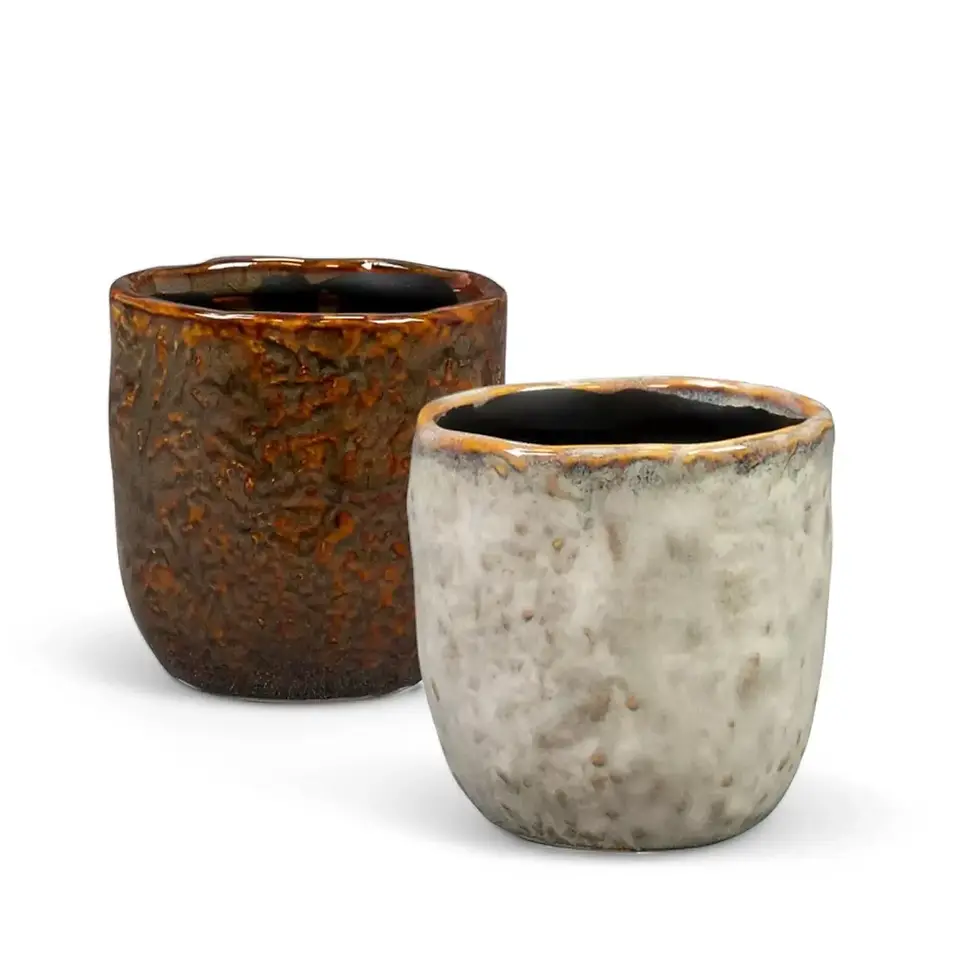Echeveria purpusorum - A Complete Guide to This Unique Succulent
Echeveria purpusorum is a compact and striking succulent known for its triangular, fleshy leaves adorned with reddish-brown speckles. The leaves range from deep olive-green to grayish-green, with edges that take on a reddish hue when exposed to bright sunlight. This slow-growing rosette plant remains small, reaching about 8 cm in diameter, making it perfect for windowsills, succulent arrangements, or as an easy-care indoor plant.
In late spring and summer, Echeveria purpusorum produces tall reddish flower stalks with small scarlet blooms tipped in yellow. With its compact size, minimal care requirements, and stunning patterning, this rare succulent is a favorite among collectors and beginners alike.
Key Features and Benefits of Echeveria purpusorum
- Distinctive leaf pattern - reddish-brown speckles on green leaves create a unique appearance.
- Drought-tolerant and low-maintenance - requires minimal watering.
- Thrives in bright light - perfect for sunny spots indoors.
- Occasionally produces offsets - easy to propagate through pups or leaf cuttings.
Natural Habitat and Growth of Echeveria purpusorum
Echeveria purpusorum is native to the dry, rocky regions of Puebla and Oaxaca, Mexico. It naturally grows on rugged, well-draining soil, adapting to extreme temperature fluctuations and minimal rainfall. In its native habitat, temperatures range from 20 to 30°C, with very little moisture throughout the year.
Indoors, this plant remains compact, with a maximum diameter of 8 cm. While it rarely produces offsets, it can occasionally form small side shoots under optimal conditions. Echeveria purpusorum is non-toxic to humans and pets, making it a safe choice for households with animals.
Echeveria purpusorum Care Guide
→ Light
- Requires bright, indirect light to full sun for compact growth and vibrant coloration.
- Insufficient light leads to stretched growth and dull colors.
- Place near a sunny window or use a grow light if needed.
→ Watering
- Water only when the soil is completely dry.
- In summer, water every 1-2 weeks and reduce frequency in winter.
- Avoid overwatering - sensitive to root rot.
→ Temperature and Humidity
- Optimal range: 20-30°C.
- Not frost-hardy - protect from temperatures below 10°C.
- Normal indoor humidity is sufficient; no misting required.
→ Soil and Pot Selection
- Use a well-draining succulent mix, enriched with sand, pumice, or perlite.
- Terracotta pots are ideal, as they help wick away excess moisture.
- Ensure the pot has a drainage hole to prevent water buildup.
→ Repotting
- Repot every 2-3 years, or if the soil becomes compacted.
- Best time to repot: spring or early summer.
→ Fertilization
- Feed with a diluted succulent fertilizer every 4-6 weeks during the growing season.
- Do not fertilize in autumn or winter.
→ Propagation
- Can be propagated through leaf cuttings or offsets.
- Gently twist off leaves, let them dry for a few days, then place on well-draining soil.
- Can also be grown from seeds, but this process is slow.
→ Semi- and Hydroponics
- Can adapt to semi-hydroponic setups with careful water control.
→ Pruning and Maintenance
- Remove dead leaves regularly to prevent rot.
- Trim flower stalks after blooming for a tidier appearance.
Common Issues and Solutions for Echeveria purpusorum
→ Pests
- May attract mealybugs, spider mites, or fungus gnats.
- Treat with neem oil or mild insecticidal soap if needed.
→ Root Rot
- Caused by overwatering or poor drainage.
- Solution: Repot in dry, well-draining soil, removing affected roots.
→ Leaf Problems
- Soft, shriveled leaves: Over- or underwatering. Check soil and adjust watering.
- Leaves losing color: Lack of light. Move to a sunnier spot.
→ Fungal Infections and Rot
- Caused by excess moisture and poor airflow.
- Solution: Ensure good air circulation, reduce watering, and remove infected leaves.
Additional Notes on Echeveria purpusorum
This succulent grows slowly and remains compact for years, making it an excellent addition to windowsills or succulent gardens. Its unique leaf markings stand out in mixed arrangements with other drought-tolerant plants.
Interesting Facts About Echeveria purpusorum
- When exposed to strong sunlight, the leaves develop a deeper reddish hue, adding to its visual appeal.
- The species name “purpusorum” honors the botanist brothers Carl and Joseph Anton Purpus, who collected many plant species in Mexico.
- Echeveria purpusorum belongs to the Crassulaceae family, making it a close relative of other popular succulents like Echeveria elegans.
Etymology - Where Does the Name Echeveria purpusorum Come From?
- Echeveria is named after Atanasio Echeverría y Godoy, a Mexican botanical illustrator.
- Purpusorum honors Carl and Joseph Purpus, who first collected and documented the plant.
- The species was described by Alwin Berger in 1930.
FAQs About Echeveria purpusorum
→ How often should I water Echeveria purpusorum?
Water only when the soil is completely dry - roughly every 1-2 weeks in summer and even less in winter.
→ Why are the leaves of my Echeveria purpusorum soft?
Soft or shriveled leaves can indicate too much or too little water. Check the soil moisture before adjusting watering.
→ Can I grow Echeveria purpusorum in a terrarium?
Not recommended - needs excellent airflow and dry conditions to thrive.
Order Yours Today!
Bring home Echeveria purpusorum and enjoy the beauty of this rare, low-maintenance succulent.
Echeveria purpusorum
Echeveria purpusorum comes in a ⌀ 6 cm pot and is approximately 10 cm tall

























































